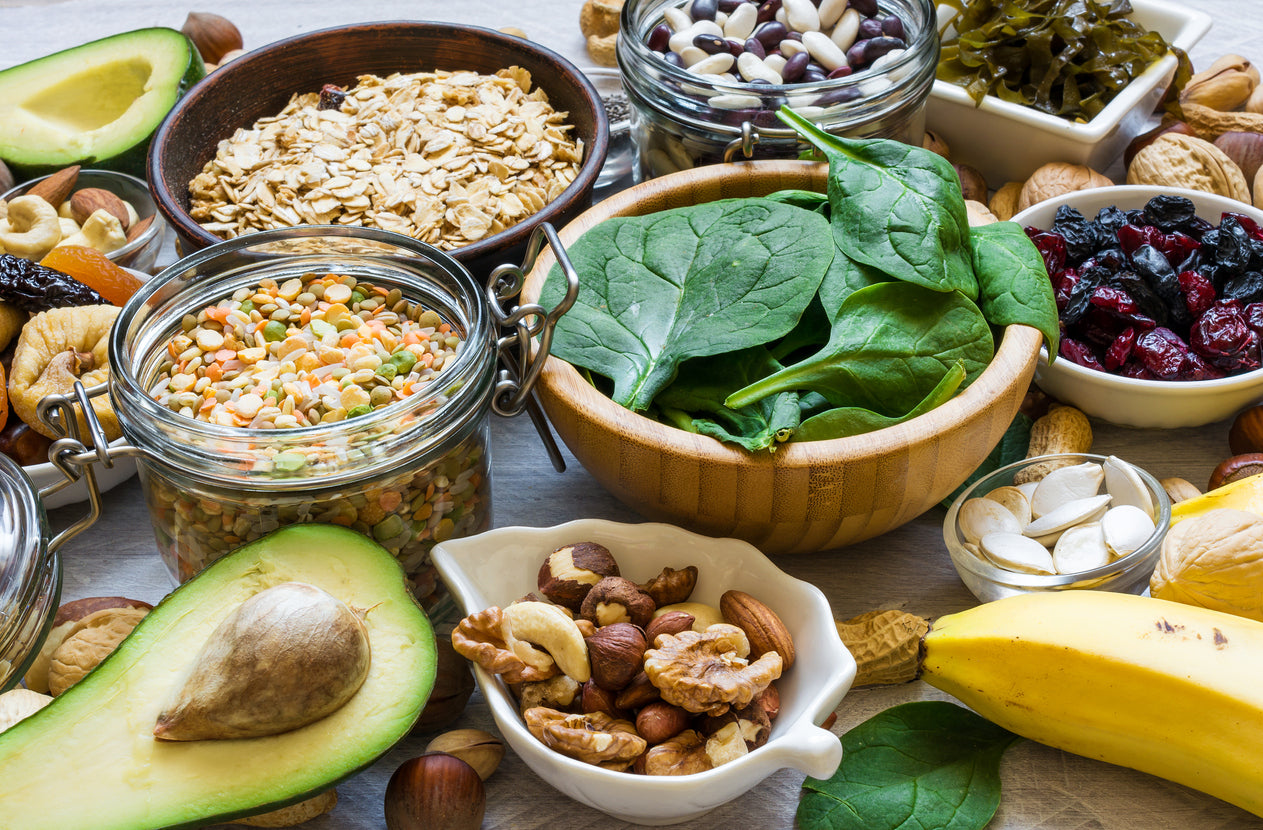Mellow mineral – How magnesium supports calm mood

While magnesium may not get as much attention as nutritional “superstars” like vitamin C, vitamin D and zinc, this hard-working essential mineral is not be taken for granted. Sometimes referred to as the body’s “master conductor,” magnesium orchestrates over 300 different life-sustaining functions and reactions in the body. In addition, it can help promote calm, stable mood (something we can probably all use more of in these demanding times!)
Despite the importance of magnesium, the National Institutes of Health reports that a large chunk of the American population (49 percent, to be exact) gets less than the estimated average daily recommendation. But, boosting your dietary intake doesn’t have to be a hardship. Some of the most flavorful, satisfying foods on the planet are brimming with magnesium.
Magnesium influences muscle function, blood sugar, heartbeat and more
Magnesium works on a cellular level to regulate muscle contraction, maintain stable heartbeat, promote normal blood pressure, synthesize DNA and control blood sugar levels. It also supports a healthy immune system and is integral to bone formation. (In fact, over half of the body’s magnesium is contained within the skeleton).
Magnesium is particularly important for proper heart function - so important, in fact, that it is used during congestive heart failure to ward off dangerous arrhythmias. Significantly, a 2018 review published in the American Journal of Clinical Nutrition suggested that magnesium deficiency can increase the risk of heart attacks and other cardiovascular problems.
Unfortunately, many factors can cause your magnesium levels to “take a hit.” Excessive alcohol consumption can deplete magnesium - as can the use of certain medications such as diuretics and proton pump inhibitors. Having type 2 diabetes or gastrointestinal disorders can also cause shortfalls in magnesium. (By the way, magnesium is believed to support cognitive and bone health, healthy blood sugar levels, and relieve headaches).
Magnesium enhances the function of calming brain chemicals
Some recent studies have suggested that anxious thoughts and feelings may be linked with low magnesium levels. Scientists say that magnesium works by modulating the hypothalamic pituitary adrenal (HPA) axis, thereby helping to support a calm mood. Magnesium also alleviates excitotoxicity (the harmful over-stimulation of brain cells). While more studies are needed, some researchers report “modest evidence” of magnesium’s beneficial effects on calming mood – and predict that magnesium supplementation could be beneficial.
In any case, if you’re looking to brighten your mood and soothe frayed nerves, it certainly can’t hurt to snack on magnesium-rich foods. After all, many foods perceived as having a calming effect (think: “comfort” fare such as milk, turkey, mashed potatoes and bananas) happen to be rich sources of magnesium. And, foods that are high in magnesium tend to be high in other valuable nutrients and dietary fiber - so eating them is a win/win.
How much magnesium do I need?
Like calcium and potassium, magnesium is a macro-mineral, which means that the body needs comparatively generous amounts to function properly. According to the Office of Dietary Supplements, the Recommended Daily Allowance for magnesium for adults is 310 to 360 mg a day for women and 400 to 420 mg a day for men. Magnesium is available in supplementary form – but check with your integrative doctor before adding magnesium to your health regimen. Many natural health experts advise magnesium citrate, magnesium lactate and magnesium chloride as the most absorbable varieties. You can also use magnesium sulfate in the form of Epsom salts, which can be add to bathwater for a soothing soak.
Proper nutrition can help guard against inadequate magnesium levels
Of course, you can also boost your magnesium intake through diet. With 156 mg of magnesium per ounce, toasted pumpkin seeds are the official “high-ringer,” followed by nuts such as almonds and cashews, each at 80 mg an ounce. Close behind are leafy greens (a half cup of spinach contributes 78 mg) and black beans, with 60 mg per cup. Bananas, peanut butter and avocados are also good sources - as are fortified cereals, soybeans, pasture-fed dairy products, cocoa, free-range poultry and wild-caught fish. Remember, whole grains and brown rice are naturally rich in magnesium, while nutritionally inferior refined grains and white rice have far lower levels.
(Pro tip: it’s always preferable to eat a clean, organic diet whenever possible or practical).
The good news is: many appetizing foods contain healthy levels of magnesium. A sweet, creamy smoothie with bananas and peanut butter, a fresh spinach salad sprinkled with cashews and pumpkin seeds, or a rich lentil or potato-based soup all can help you stay “topped up” on magnesium, and hopefully help keep your mood on an even keel.
Sources for this article include:






